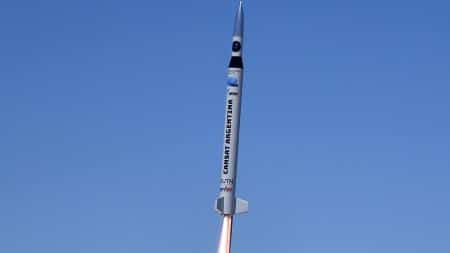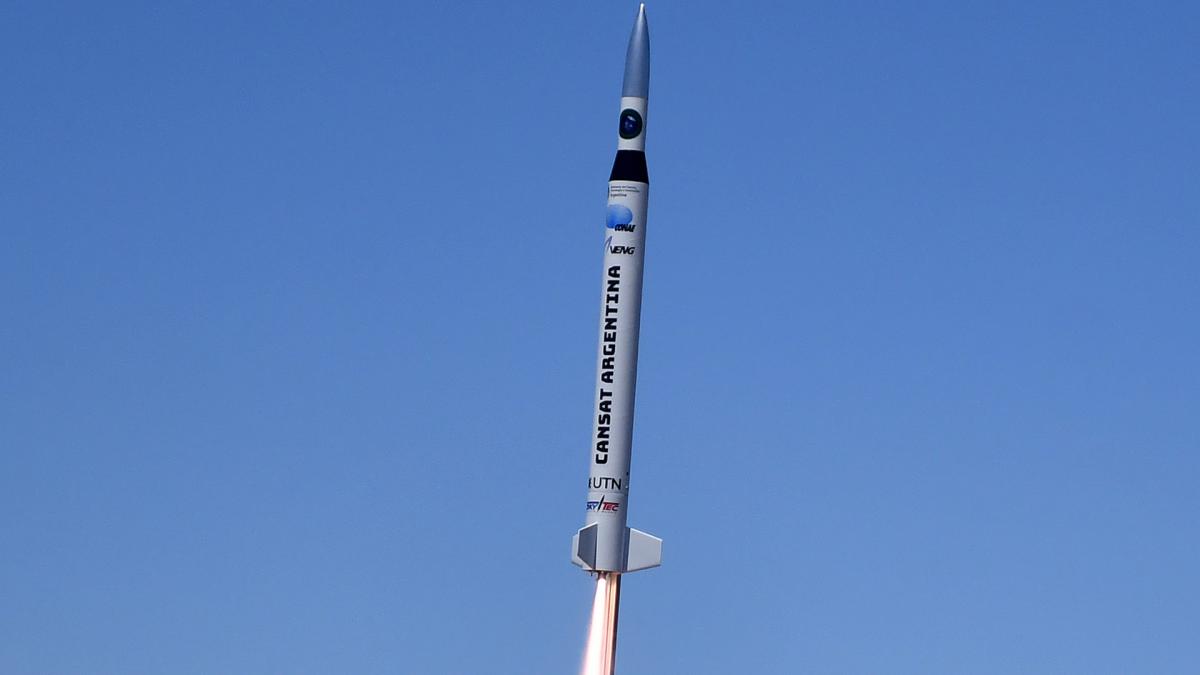 Students from the winning secondary schools of the Cansat 2022 contest launched their picosatellites / Photo: Laura Lescano
Students from the winning secondary schools of the Cansat 2022 contest launched their picosatellites / Photo: Laura Lescano
The five teams made up of students from the winning secondary schools of the Cansat 2022 contest successfully launched their suborbital picosatellites on the premises of the National Commission for Space Activities (Conae) in Córdoba, and the Minister of Science and Technology, Daniel Filmus, stated that this factdemonstrates the capacity of our technical schools to educate children with technological development and make their contributions by showing what they have learned”.
The weather was ideal in Falda del Cañete for the flights of the satellites created by the young people from Technical School No. 9 DE 7 “Ing. Luis A. Huergo” (CABA), ISan José de Justiniano Posse Technical Institute (Cordoba), Villada Salesian Technical Institute (Córdoba, Provincial School of Technical Education No. 3, Pirané (Formosa) y Provincial School of Technical Education No. 18, in Puerto Esperanza (Misiones).
The Minister of Science and Technology, Daniel Filmus, celebrated the development of the contest that ended today, and in dialogue with Télam he pointed out that “Argentina has relaunched its entire space plan, which includes manufacturing and designing its own satellites, and Argentina is one of the few countries in the world that is in a position to do so”.
“We have also resumed manufacture of the Argentine launcher, the Tronador 2that we hope in 2027 to have it and be the first country in the region in a position to launch its own satellites,” the national official signed, and considered that “at the same time we need professionals, young people who early develop their passion, their vocation for the spatial”.
“It is contest has shown almost a thousand projects throughout the countrymore of 5,000 boys working almost thousand schools across the country, which demonstrates the capacity of our technical schools, secondary schools, to educate children with technological development and to be original, to make their own contributions and to be here today competing and showing what they have learned”, Filmus valued.
For its part, the executive and technical director of Conae, Raúl Kulichevsky, expressed that “today is a holiday for Conae. It is a privilege to have the opportunity to see the enthusiasm of young students with the activities that we do in our space agency, to be able to offer them the opportunity to start in this sector and let them know that they can do it in Argentina”.
“This is the first Cansat competition held in the country. We are very happy with the call, which far exceeded expectations. So we are already planning a new edition,” Kulichevsky said.
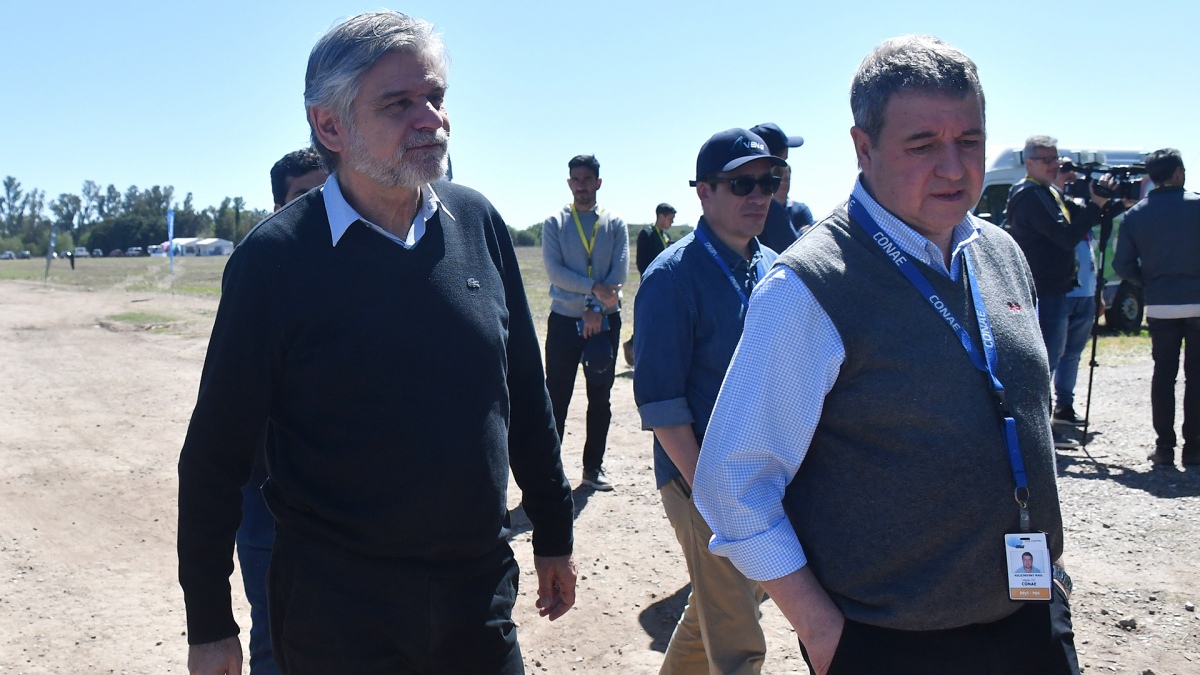 The Minister of Science and Technology, Daniel Filmus, participated in the launch in Córdoba./ Photo: Laura Lescano
The Minister of Science and Technology, Daniel Filmus, participated in the launch in Córdoba./ Photo: Laura Lescano
With the purpose of bring science and technology closer to students of secondary schools, the Ministry of Science, Technology and Innovation and the National Commission for Space Activities (Conae) designed the Cansat Argentina Call.
Cansat is an international initiative promoted by various space agencies around the world, including NASA (USA) and ESA (Europe), which proposes that students build a payload, the size of which is no larger than a soda can, and launch it on a rocket to an altitude of approximately one kilometer. Hence, the term CAN (can) and SAT (satellite), for its acronym in English.
Filmus also highlighted that “it is a thrill to see the happy teachers, the kids hugging each other. It really is a unique opportunity that they have, having invited them, that they are here. We hope that many of them will be engineers, that they will be working in the future at Conae , in Arsat, in Veng, in Invap, in the companies that are dedicated to this area”, he confided.
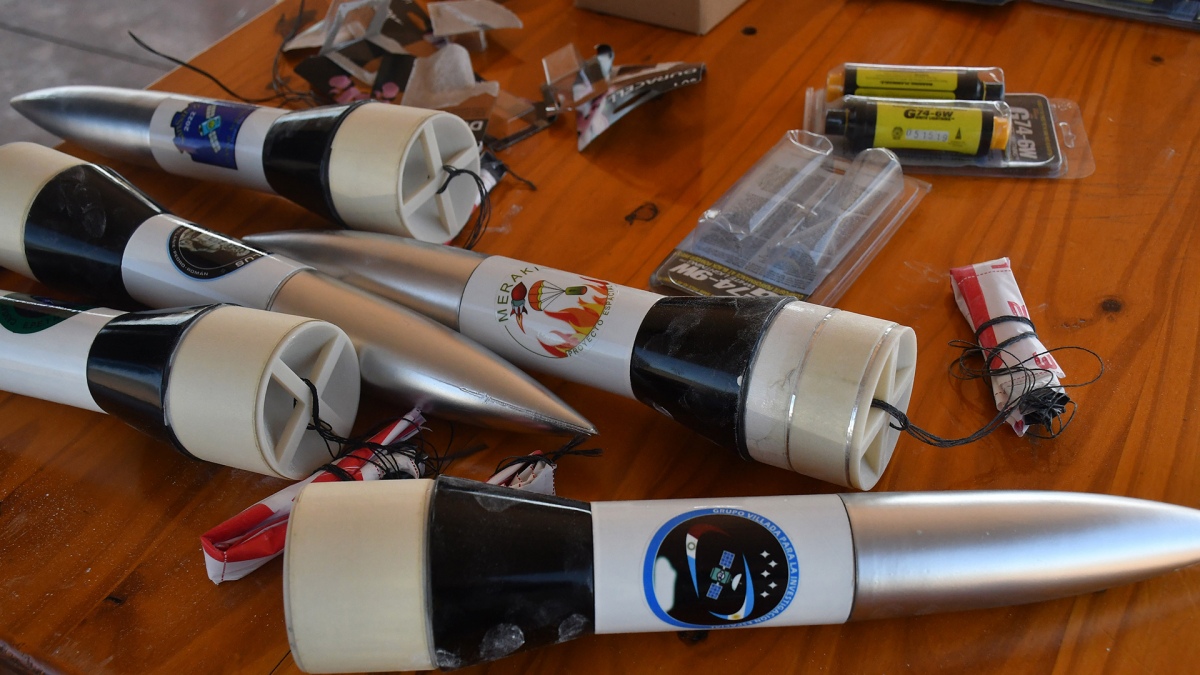 The Ministry of Science, Technology and Innovation and Conae designed the Cansat Call. Photo: Laura Lescano
The Ministry of Science, Technology and Innovation and Conae designed the Cansat Call. Photo: Laura Lescano
During his visit to Cordoba, Filmus also has a tour of the Argentine Aircraft Factory on the agenda (Fadea), and confirmed that the objective is “to support the development of the aerospace industry.”
“Argentina was able to have, in the 50s, the manufacture of the first airplane, the Pulqui. It was an enormous pride. We have had a very important aeronautical industry that due to lack of investment from the State stagnated and today we are with all the willingness, the strength and resources that are necessary to recover that tradition. We continue working so that Argentina also has sovereignty around this type of technology,” Filmus assured.
Students and their space experience
The young participants of the groups also expressed their opinion after each launch.
Santiago Bas, in charge of the mechanical part of the Ad Astra group, from missionary school with the Seus project, he expressed: “Honestly, I still don’t believe that it went well for us. We suffered a lot at the last minute because we had some setbacks with the telemetry, but luckily it worked and it was much more than we expected.”
“The secondary mission of our satellite consisted of the dispersion of silver iodide, and obtaining basic telemetry data such as barometric altitude, pressure and temperature”
Tomás Giraudo, from the Villada Institute of Córdobaadmitted that they were “very ambitious. Last night we could hardly sleep from anxiety. We had a mishap: the parachute did not open, but we were able to do a live resistance test to a 300-meter fall and the satellite is intact He was able to receive all the telemetry, the mission was accomplished.”
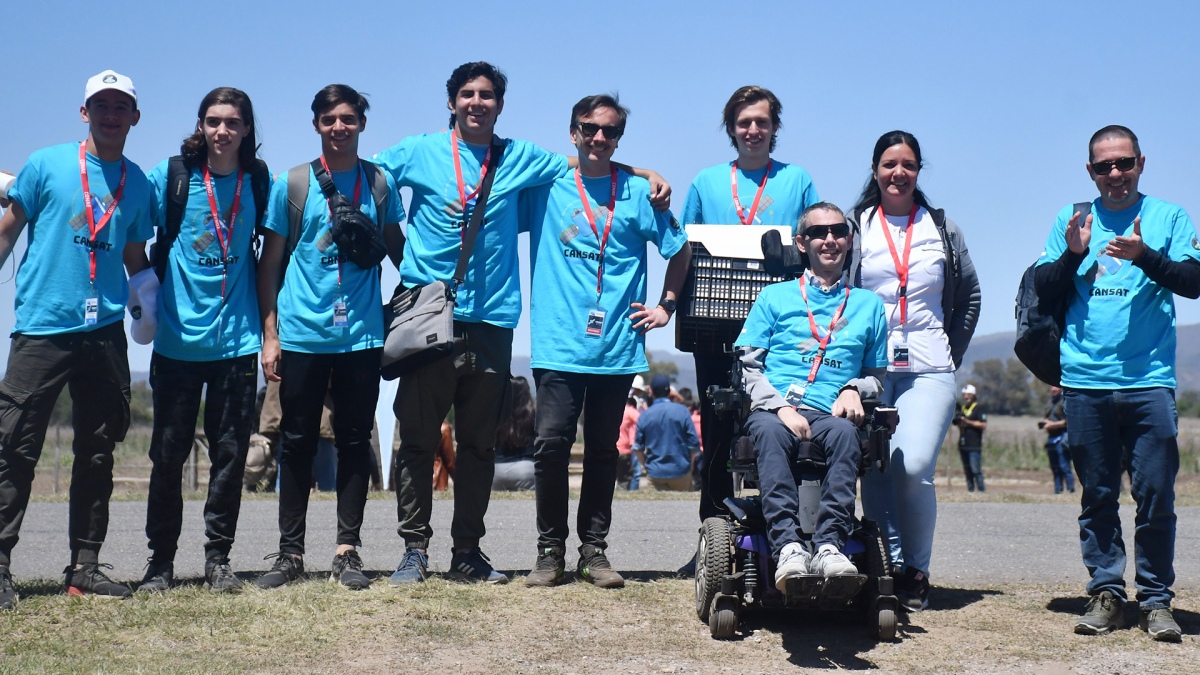 Photo: Laura Lescano
Photo: Laura Lescano
“The data that we obtain with our mission is later used for the calibration of meteorological radars, which are used for forecasts,” Giraudo added, and recognized that “it is an experience that we will not forget, we share it with the other groups, we We relate very well. We created a great Cansat team and it leaves us with great feelings”.
Martín Sánchez, from the Huergo school in the Federal Capital– participated with the Caelus team and assured that “everything turned out better” than expected, “it is a satisfactory result”, he added.
“Particularly, it seems to me a very interesting initiative. I want to thank the whole team because I seriously know that it is very important to encourage science in the kids. That is what I am passionate about, I am very grateful for all this,” Sánchez added.
Camila Farías, from the Formosa school and member of the Meraki team, He said with great emotion that “our rocket has just been launched and the mission went well, so we are happy. We want to thank Conae, UTN and everyone who made this possible thanks to them.”
Being at Conae “is an incredible feeling, I’m still not down, we were also with Minister Filmus, so we’re very happy,” Farías celebrated, adding that with the satellite his team’s main mission is to measure “temperature and pressure. And the second is humidity, pressure and height,” Farías added.
The young student said that the process to reach this instance was “a roller coaster of emotions, sometimes we were good, sometimes bad, and now we are here, so we are happy to have arrived.”
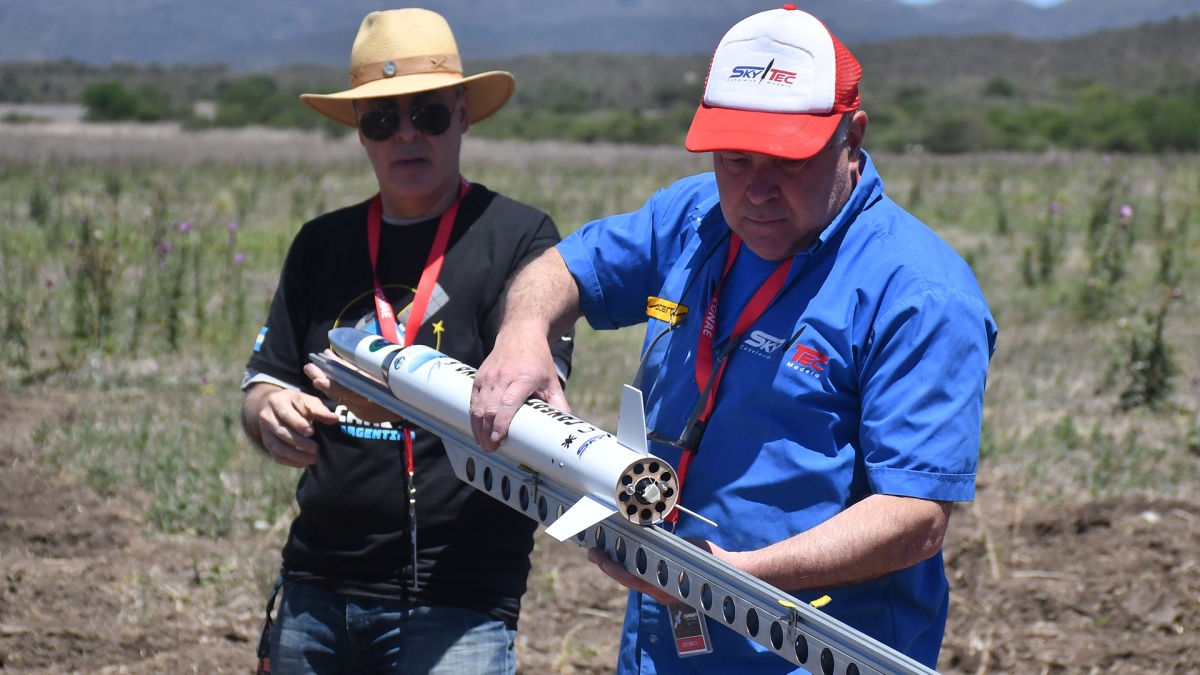 Photo: Laura Lescano
Photo: Laura Lescano
Nazareno Orzo, from the ElectroSix group, from Justiano Posse, He said that to get to the launch instance “it was a lot of work. We had a lot of nerves, beyond that the launch was a success, the census was perfect.”
“We measure pressure and temperature through the primary mission, and our secondary mission is to measure carbon monoxide and dioxide. We do it with the aim of making people aware of all the evil gases that we have in our environment, and that it is not normal,” closed Orso.
The Cansat competition started last June with 850 registered teams from secondary schools from all the provinces of the country.
Total, 4,500 students received training by professionals from Conae and the National Technological University (UTN) with the aim of acquiring the knowledge, tools and materials necessary to carry out the development of the project.
After overcoming different instances of the competition, the five teams reached the final, whose Cansat had to fulfill the primary mission proposed by Conae: pressure and temperature measurement during the flight time, and the transmission of these data to the ground station, at least once per second.


